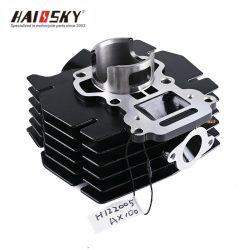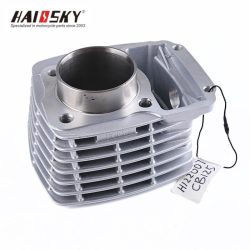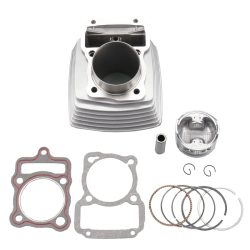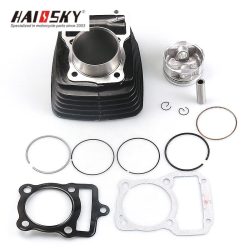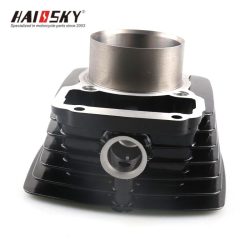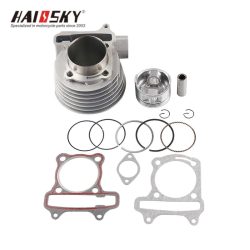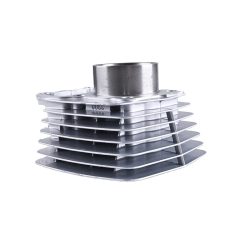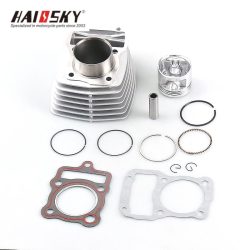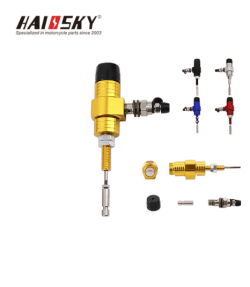OEM Motorcycle Parts
Category: Motorcycle Cylinder Parts - High-Performance OEM Cylinders
Everything You Need to Know About Motorcycle Cylinders
When it comes to motorcycle engines, the cylinder is one of the most critical components. It plays a vital role in converting fuel into motion, directly impacting the bike’s performance, power, and efficiency. Whether you’re a B2B buyer sourcing motorcycle cylinders for wholesale or a motorcycle enthusiast looking to understand the mechanics, this guide will cover everything you need to know about motorcycle cylinders. We’ll explore the types, specifications, maintenance, and how to choose the right cylinder for your needs.
Types of Motorcycle Cylinders
Motorcycle cylinders come in various configurations, each designed to meet specific performance and design requirements. Here’s a breakdown of the most common types:
1. Single-Cylinder Engines
Single-cylinder engines are the simplest and most cost-effective option. They are lightweight and easy to maintain, making them ideal for small-displacement bikes and commuter motorcycles. However, they tend to produce uneven power strokes and vibrate more than multi-cylinder engines.
Best for: Entry-level bikes, off-road motorcycles, and small commuter bikes.
2. Twin-Cylinder Engines
Twin-cylinder engines, also known as parallel-twin engines, feature two cylinders arranged side by side. They offer a smoother power delivery and better balance compared to single-cylinder engines. Twin-cylinder engines are popular in mid-range motorcycles and are known for their reliability and efficiency.
Best for: Mid-range motorcycles, cruisers, and adventure bikes.
3. Triple-Cylinder Engines
Triple-cylinder engines strike a balance between twin-cylinder and four-cylinder engines. They deliver smooth power delivery and a unique exhaust note, making them a favorite among performance-oriented riders.
Best for: Sport bikes and performance motorcycles.
4. Four-Cylinder Engines
Four-cylinder engines are the most popular choice for high-performance motorcycles. They provide excellent power, smooth operation, and minimal vibration. These engines are commonly found in sport bikes and touring motorcycles.
Best for: High-performance sport bikes, touring bikes, and luxury motorcycles.
5. Six-Cylinder Engines
Six-cylinder engines are rare but offer unparalleled smoothness and power. They are typically used in high-end touring bikes and luxury motorcycles.
Best for: High-end touring bikes and luxury motorcycles.
6. Opposed-Cylinder Engines
Opposed-cylinder engines, also known as boxer engines, have cylinders placed opposite each other. This design lowers the bike’s center of gravity, improving stability and balance.
Best for: Large touring bikes and adventure motorcycles.
7. Electric Motorcycles
Electric motorcycles use battery-powered electric motors instead of traditional cylinders. These motors deliver power smoothly and evenly, similar to multi-cylinder engines.
Best for: Eco-friendly and urban commuting motorcycles.
Specifications of Motorcycle Cylinders
When choosing a motorcycle cylinder, it’s essential to consider the following specifications:
1. Material
Motorcycle cylinders are typically made from cast iron or aluminum alloys. Cast iron is durable and wear-resistant, while aluminum alloys are lightweight and offer better heat dissipation.
2. Size and Displacement
The size and displacement of a cylinder determine the engine’s power output. Larger cylinders with higher displacement can hold more air and fuel, resulting in greater power.
3. Cooling System
Motorcycle cylinders use either air cooling or liquid cooling systems. Liquid cooling is more effective at maintaining optimal engine temperatures, especially in high-performance bikes.
4. Configuration
Cylinders can have vertical, parallel, or V-configurations. The V-configuration is compact and allows for larger displacement, while vertical and parallel configurations are more affordable and suitable for smaller engines.
Motorcycle Cylinder Maintenance
Proper maintenance is crucial for ensuring the longevity and performance of motorcycle cylinders. Here are some tips:
Regular Inspection: Check for signs of wear, damage, or rust. Inspect the cylinder head, gasket, and bolts for leaks or damage.
Cleaning: Remove dirt, dust, and debris using a soft brush and cleaning solution.
Lubrication: Use high-quality engine oil to lubricate moving parts.
Overhaul and Replacement: Overhaul the cylinder when necessary and replace it in case of extreme wear or damage.
How to Choose the Right Motorcycle Cylinder
When sourcing motorcycle cylinders for wholesale, consider the following factors:
Compatibility: Ensure the cylinder is compatible with the make, model, and year of the motorcycle.
Condition: Decide whether you need new, used, or refurbished cylinders.
Budget: Consider the overall cost, including installation and additional parts.
Warranty: Check the warranty period offered by the supplier.
Supplier Reputation: Research and read reviews about the supplier.
Performance: Evaluate the cylinder’s performance and power output.
Legal Compliance: Ensure the cylinder meets emission standards and regulations.
Future Availability: Check the availability of spare parts and upgrades.
DIY Guide: Replacing Motorcycle Cylinders
Replacing a motorcycle cylinder requires precision and attention to detail. Here’s a step-by-step guide:
Safety First: Turn off the motorcycle and wear safety gear.
Gather Tools: You’ll need a socket set, torque wrench, gasket scraper, and assembly lubricant.
Prepare the Motorcycle: Drain the coolant and disconnect electrical connections.
Remove the Old Cylinder: Loosen and remove the cylinder head bolts.
Install the New Cylinder: Align the new cylinder with the engine block and tighten the bolts.
Reassemble the Motorcycle: Reconnect all components and refill the coolant.
Final Checks: Start the engine and monitor for leaks or unusual sounds.
Q&A: Common Questions About Motorcycle Cylinders
Q1: What is better, a 2-cylinder or 4-cylinder motorcycle?
A1: A 4-cylinder motorcycle offers smoother power delivery and higher performance, while a 2-cylinder engine is more fuel-efficient and easier to maintain.
Q2: Which is better, a 3-cylinder or a 4-cylinder motorcycle?
A2: A 4-cylinder motorcycle provides more power and smoother operation, but a 3-cylinder engine offers a unique balance of performance and efficiency.
Q3: Is a 4-cylinder or 6-cylinder motorcycle faster?
A3: A 6-cylinder motorcycle is generally faster and smoother, but it’s also heavier and less fuel-efficient than a 4-cylinder bike.
Q4: Can a 4-cylinder beat a V6?
A4: In most cases, a V6 engine will outperform a 4-cylinder engine due to its higher power output and smoother operation.
Q5: How many cylinders are in a V12?
A5: A V12 engine has 12 cylinders arranged in a V-shaped configuration.
By understanding the types, specifications, and maintenance of motorcycle cylinders, you can make informed decisions when sourcing or upgrading motorcycle parts. At Haissky.com, we offer a wide range of high-quality motorcycle cylinders to meet your business needs. Explore our catalog today and find the perfect fit for your customers!


